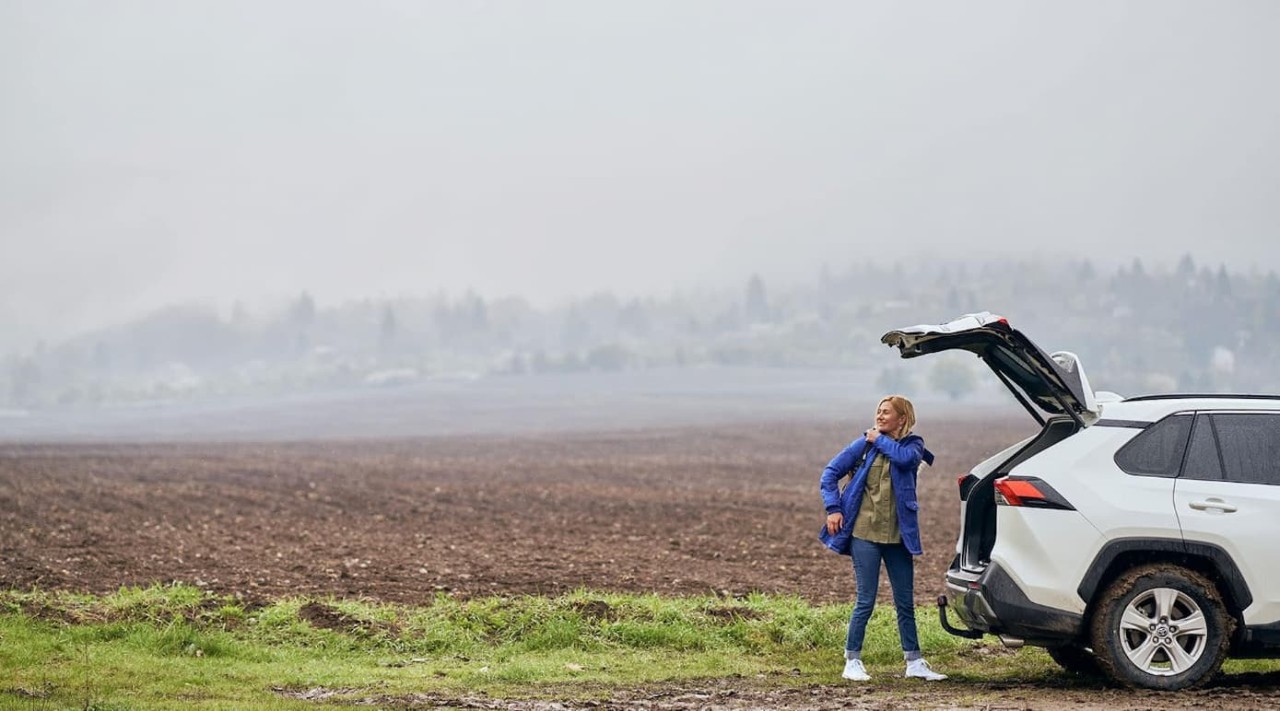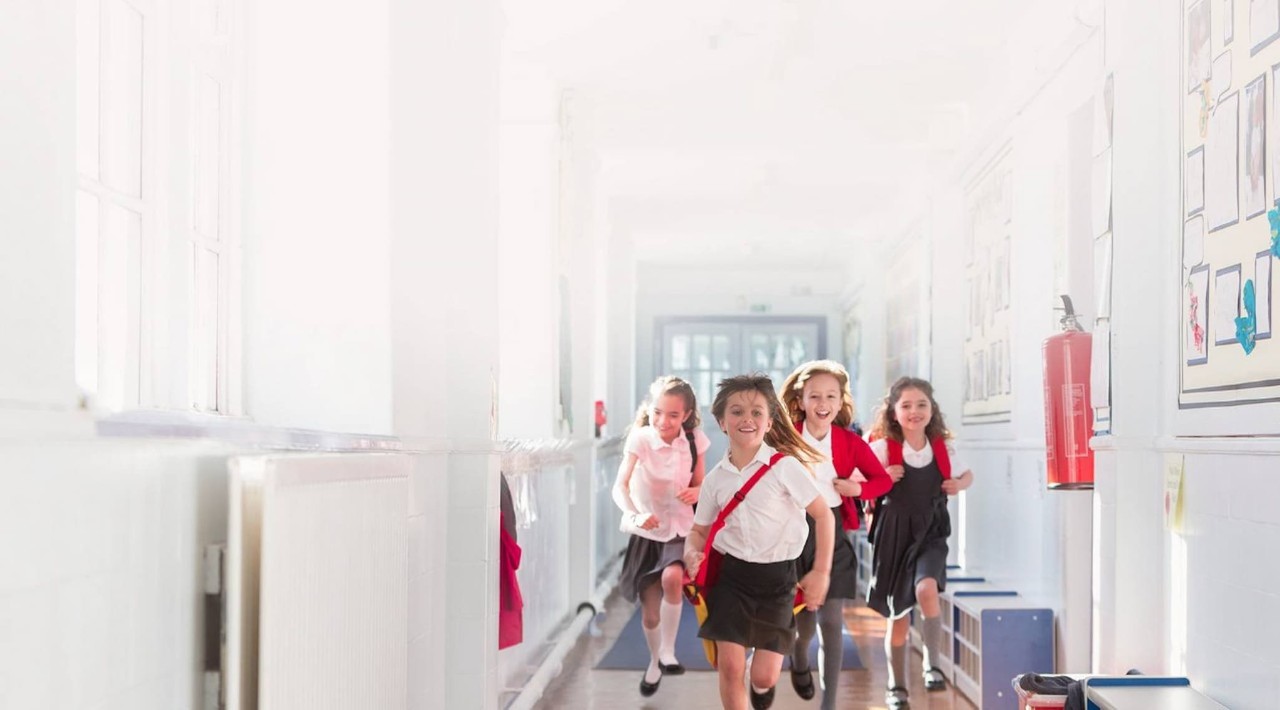Note : This chapter of the Guide is only intended as a guide to better understanding of your policy and of the actions that you must take in various situations. You must refer to your Policy wording and Schedule for precise details of your cover and all terms, conditions, limitations and exclusions applicable to it.
All school Boards have a legal responsibility under the Fire Services Act 1981 as amended by the Licensing of Indoor Events Act 2003, to ensure that their school buildings are safe.
Fire Services Act
Section 18(2) of the Fire Services Act 1981 states: “It shall be the duty of every person having control over premises to which this section applies to take all reasonable measures to guard against the outbreak of fire on such premises, and to ensure as far as is reasonably practicable the safety of persons on the premises in the event of fire.”
Definition of a potentially dangerous building
Section 19(1) of the Act defines a potentially dangerous building as: “any building which would, in the event of fire occurring, constitute a serious danger to life for any of the following reasons:
(a) The fact that large numbers of persons habitually resort thereto or are accommodated therein.
(b) The absence of any or adequate appliances or fittings:
(i) for extinguishing fires in the building;
(ii) for enabling the occupants to escape on the occurrence of a fire;
(iii) for the automatic detection of an outbreak of fire;
(iv) for giving warning to persons in case of fire;
(v) for securing that the means of escape can be safely and effectively used at all times;
or
(vi) for emergency lighting.
(c) The flammable nature of the materials of which the building is made.
(d) The flammable nature of the furniture, furnishings and fittings in the building.
(e) The absence of adequate means of escape from the building.
(f) The absence of any or adequate notices as to the procedure which should be followed in the event of fire.
(g) The flammable, explosive or potentially explosive nature of anything used, stored or deposited within the building.
(h) The fact that a fire therein would be likely to spread rapidly within the building or to other premises.
(i) The fact that any power supply or lighting system with which the building is provided is defective, inadequate or inadequately maintained.
(j) The fact that any heating or ventilating system with which the building is provided is defective or inadequately maintained or presents a fire hazard, or
(k) Any other similar reason.
Code of Practice for the Management of Fire Safety in Places of Assembly
In February 1989, the Department of the Environment issued the above mentioned Code
to give guidance on measures necessary to discharge their existing statutory obligations under Section 18(2) of the Fire Services Act 1981. (The term Places of Assembly includes Schools).
What are the main elements of the Code?
The main elements of the Code are as follows:
Section 1 - Management Duties
Outlines the main responsibilities of management in relation to fire safety. It stresses the importance of undertaking an appropriate fire safety programme, and the need to appoint a responsible person to take charge of it. The various duties are described in general and are outlined, as appropriate, in more detail in later sections.
Section 2 - Fire Prevention
Day-to-day fire prevention measures are a key element in the fire safety management of premises. The Code recommends a number of appropriate precautions including the establishment of good housekeeping practices, periodic inspections, the identification and elimination of potential fire hazards both inside and outside the premises and the application of safety rules.
Section 3 - Staff Training
The safety of school occupants will be enhanced if staff know what to do both before and during an outbreak of fire or other emergency. This can be achieved by ensuring that staff (including temporary and part-time personnel) receive appropriate instruction and training.
Section 4 - Fire and Evacuation Drills for Management and Staff
Management and staff should undertake these drills so that they will be familiar with what should be done in the event of a fire occurring. The section outlines a range of procedures which should be followed in the event of a fire or other emergency.
Section 5 - Informing the Public
It is extremely important that members of the public in a place of assembly should be fully aware of the fire safety precautions in the premises. This can be achieved by the display of notices regarding the action to be taken in the event of a fire or an alarm being given and also by announcements before the commencement of entertainment, etc. and at regular intervals while the public are present.
Section 6 - Escape Routes
The Fire Safety in Places of Assembly (Ease of Escape), Regulations, 1985 provide that certain fire safety precautions related to escape routes and exit doors should be taken by every person having control over schools. Additional management guidance is given as to precautions necessary to ensure the effectiveness of escape routes.
Section 7 - Inspection and Maintenance of Fire Protection Equipment
There is a duty on the person in control of a premises to take all reasonable measures to guard
against the outbreak of fire on the premises and to ensure as far as is reasonably practicable the safety of persons on the premises in the event of a fire. This requires the provision of fire protection systems and equipment. The recommended measures for inspecting and maintaining this equipment are set out.
Section 8 - Assisting the Fire Brigade
This Section details measures which should be taken to assist the fire brigade when it is responding to a fire or other emergency call.
Section 9 - Record Keeping
It is essential that a record should be kept of the actions taken to implement and oversee the fire safety programme. This Section outlines the information that should be recorded.
What needs to be incorporated in a fire safety management programme?
The key objectives of fire safety management are:-
1: to minimise the risk of fire;
2: to protect the means of escape;
3: to limit the spread of fire.
The fire safety programme should incorporate arrangements for:
(a) the prevention of an outbreak of fire through the establishment of day to day fire prevention practices;
(b) the instruction and training of staff;
(c) the holding of fire and evacuation drills;
(d) informing the public of the procedures to be used in the event of a fire or other emergency;
(e) ensuring fire escape routes and fire exit doors/passageways are unobstructed and doors operate correctly;
(f) the provision of adequate fire protection equipment and systems, and their inspection and maintenance;
(g) consulting with and implementing recommendations of the local fire brigade;
(h) producing an emergency plan and erection of fire notices.
What about Fire Safety Records?
The keeping of fire safety records is an important element of the fire safety programme.
The person responsible for the implementation and overseeing of the fire safety programme should keep a Fire Safety Register/ Fire Log Book to record all fire safety matters. The register should be kept on the premises at all times and should be available for inspection by any authorised officer of the fire authority.
The following data should be recorded in the register:-
(a) The name of the Fire Safety Manager (and those nominated to deputise for him/her).
(b) The details of specific duties that have been assigned to staff.
(c) The details of instruction and training given to staff, and by whom.
(d) The date of each fire and evacuation drill, the names of staff taking part, and the type of exercise held.
(e) The type, number and location of fire protection equipment on the premises including water supplies, hydrants etc.
(f) The date of each inspection and test carried out on fire protection equipment and systems, along with brief comments on the results of the checks and actions taken(and by whom) to remedy defects.
(g) The details of all fire incidents and false alarms that occur and the action taken.
Does any other legislation apply?
The Fire Precautions (Workplace) Regulations 1997 provide for minimum fire safety standards in places where people work and the Safety Health and Welfare at Work Act 2005 is also relevant. One of the key elements of these regulations is the need to carry out fire risk assessments. In other words if the school does this well, then all the other points concerning fire safety management will fall neatly into place.
What is a fire risk assessment?
A fire risk assessment is an organised and methodical look at the school premises, the activities carried on there and the likelihood that a fire could start and cause harm to those in and around the premises.
The aims of the fire risk assessment are:
(a) To identify the fire hazards.
(b) To eliminate or reduce the risk of those hazards causing harm to as low as is reasonably practicable.
(c) To decide what physical fire precautions and management arrangements are necessary to ensure the safety of people in the school premises should a fire start.
The terms “hazard” and “risk” are defined as follows:
Hazard: anything that has the potential to cause harm.
Risk: the chance of that harm occurring.
The risk assessment must take into account all people who may be affected by a fire in the school and this can form part of the existing health and safety risk assessments. The assessment includes a requirement to consider people with intellectual disabilities and special needs.
If there are more than three employees, the risk assessment must be recorded in writing. The risk assessment and its findings are then used to establish what fire precautions need to be provided to ensure a safe environment for the pupils and staff. The risk assessment will require a full walk through of the school and should include the following points:
(a) Identification of all the fire hazards in the school.
(b) Establish who could be in danger if a fire occurs and ensure that people can escape safely.
(c) Establish if the existing fire precautions are adequate, or identify if more should be done to reduce or eliminate the risks.
(d) Record findings of the risk assessment and note what has been done to reduce or eliminate the risks.
(e) The results of the findings should be given to your staff.
(f) Constantly keep the risk assessment under review to ensure that it is up-to-date.
The following reference will be of assistance in carrying out risk assessments:-
The Regulatory Reform (Fire Safety) Order 2005 became effective in October 2006 for the United Kingdom. The Department for Communities and Local Government in the UK have produced a series of guides for different types of premises and a specific guide has been made available for Education. Information on fire safety management is included within the guide, including a section on fire risk assessment. Guides can be downloaded free of charge from www.firesafetyguides.communities.gov.uk.
In our experience schools are particularly vulnerable to fires that are deliberately set. In view of this, the risk assessment will have to specifically include the risk of arson. It is recommended that you start your risk assessment outside the school by assessing the potential arson risk and then work into the main school buildings. The risk of arson will be dealt with in more detail in Chapter 10 - Security in the School.
Have you any guidelines?
The following are five steps you need to take to carry out a risk assessment (Source: Department for Communities and Local Government Publications, UK – Fire Safety Risk Assessment Educational Premises)
Fire Safety Risk Assessment
1. Fire hazards
Identify sources of:
(a) ignition
(b) fuel
(c) oxygen
2. People at risk
Identify people:
(a) in and around the premises
(b) especially at risk
3. Evaluate, remove, reduce and protect from risk
(a) Evaluate the risk:
(i) of a fire occurring,
(ii) to people from fire.
(b) Remove or reduce:
(i) fire hazards,
(ii) the risks to people.
all in the following areas;
(a) Detection and warning
(b) Fire-fighting
(c) Escape routes
(d) Lighting
(e) Signs and notices
(f) Maintenance
4. Record, plan, inform, instruct and train
(a) Record significant findings and actions taken,
(b) Prepare an emergency plan,
(c) Inform and instruct relevant people,
(d) Co-operate and co-ordinate with others,
(e) Provide training.
5. Review
(a) Keep the assessment under review.
(b) Revise where necessary.
We have also included a Fire Risk Assessment Checklist in the Appendices (Appendix 2) and a Key Fire Hazards and Controls Checklist (Appendix 3, page 104 - 107) which may be used to assist schools to audit their fire safety hazards and arrangements.
What are the common causes of fire in schools?
1. Malicious fire / arson, this will be dealt with in more detail in Chapter 10 – Security in the School.
2. External waste management.
3. Inadequate control of building contractors.
4. Poor housekeeping/ storage arrangements.
5. Electrical fires – see hazards and controls checklist
What are the issues surrounding external waste management?
Due to the high risk of deliberately set fires, the grounds of the school should be clear of waste especially combustible materials such as paper, wood, plastics, paint tins, oils or other flammable liquids. Combustible waste should never be stored in rubbish heaps or loose in the open. Storage should be in suitable receptacles such as waste/litter bins, recycling bins, skips etc. All such receptacles should be located away from the school building so that they do not become the source of a fire accidentally or maliciously set.
The following points should be specifically assessed:
(a) All waste receptacles should be secured a minimum of 8 metres from the school buildings. Chaining the bins to a fixed point, or providing a secure compound area can achieve this.
(b) Where possible, all waste receptacles should have lids that are kept locked when not in use.
(c) Schools in built up urban areas may have difficulty in complying with the 8 metre recommendation. In such cases an assessment is needed to visualise the effect of a burning waste recepticle to nearby buildings.
Factors that can reduce the risk of fire spread to buildings can include siting waste receptacles against or facing masonry walls without windows and without combustible overhangs such as timber soffits.
If this is not possible a metal roofing over the receptacles might help to deflect flames away from the wall and roof. Otherwise the case for having lockable lids for the waste containers is considerably strengthened.
(d) Where possible, all external waste receptacles should be emptied at the end of each day.
(e) Waste receptacles should not be fixed to combustible wall claddings of school buildings or be located in covered or recessed areas.
(f) Any recycling receptacles (particularly those containing paper and textiles) should be located and secured a minimum of 8 metres from the school buildings.
(g) Loose combustible materials must never be stored against or close to the school buildings.
How do we address issues relating to building contractors?
The School’s Fire Safety Programme should also address control measures for contractors on the school property, as they can significantly increase the risk of fire and potentially cause obstruction to escape routes.
Contractors can:
(a) use heat applications (such as blow torches or welding equipment) when undertaking work to flat roofs, plumbing or removing paint;
(b) store combustible and flammable materials on site such as petrol, thinners, and skip bins;
(c) break through firewalls. This can occur when a school is being rewired or for upgrades for computer or telephone networks. The wire is often carried above a suspended ceiling and taken through fire walls. These breaks in the fire barriers may not be made good with material of the same fire resistance.
(d) Contractors may interfere with normal security measures, such as erecting scaffolding that can provide easy access for an intruder, creating a risk of malicious damage or arson;
(e) may cause obstruction to emergency access routes, through storage of material and equipment. The key to eliminating such hazards is to ensure procedures and rules are in place with the Contractor before work commences. Discussions should be held with the contractor on:
(i) how the work will be carried out,
(ii) arrangements for proper storage of combustible materials, plant and equipment and
(iii) monitoring of escape routes.
Where use of heat is necessary, a “hot work permit” system should be used. This documented permit requires confirmation from the contractor that fire precautions have been taken prior to, during and after hot work. A sample of a “hot work permit” is available on request from the Allianz Risk Management Department.
What about housekeeping/storage arrangements?
Good housekeeping will lower the chances of a fire starting, so the accumulation of combustible materials in premises should be monitored carefully. Good housekeeping is essential to reduce the chances of escape routes and fire doors being blocked or obstructed.
Many of the materials found in educational premises will be combustible. If your premises have inadequate or poorly managed storage areas then the risk of fire is likely to be increased. The more combustible materials you store the greater the source of fuel for a fire.
Combustible items are materials that catch fire with relative ease or with the minimum amount of external intervention e.g. discarded cigarette butt etc. However, by carefully considering the type of material, the quantities kept and the storage arrangements, the risks can be significantly reduced.
The following should be of assistance in this regard:
(a) Ensure that rubbish is removed regularly and stored in suitable and secure containers.
(b) Keep escape routes, store rooms and cupboards, staircases and under-stair areas free from rubbish.
(c) Do not obstruct signs and notices, fire alarm call points or escape routes.
(d) Do not block entrances and exits with bicycles or waste material.
(e) Waste paper bins (with lids) should be of metal construction.
(f) Avoid the accumulation of fluff and grease deposits in kitchens and similar areas.
(g) Have faulty fluorescent tubes replaced and check ceilings for scorch marks from fluorescent units.
(h) Avoid placing materials close to light bulbs in store rooms.
Have you any further guidance on fire risks and preventative measures?
At it’s simplest, reducing fire hazards and the risk of a fire starting means separating flammable / combustible materials from ignition sources.
Below are some key tips for use when carrying out fire safety checks in your school. While the following examples are by no means exhaustive they will provide you with a sound base from which to develop your own risk assessments. Each school is a unique risk in it’s own right and schools should “tailor” these suggestions to suit the requirements of their own school.
Fire detection and warning
School management must ensure there are adequate means to warn people of a fire in the school. This could take the form of an electronic fire alarm system in larger premises, or in small schools this could be hand bells, whistles or a manually operated fire alarm bell. The key test is to ensure that the fire alarm system can be heard throughout the entire school. Make it distinctive from the normal school bell eg. a constant or intermittent ringing.
A fire detection system is of considerable value in providing protection against fire. If not discovered promptly, a fire can become established and grow to a level that will be difficult to extinguish. A fire detection system monitored 24 hours a day can provide early detection of a fire and notification of the fire brigade even when there is no one on the premises or if the fire starts in a concealed space.
Various types of detector are available. A fire alarm company can recommend the appropriate type for each area of your buildings. Here are some points to consider regarding fire detection systems:
(a) Systems should be installed and serviced by qualified persons in accordance with IS 3218 (or any amendment or replacement).
(b) Systems should be connected to a central station monitoring service manned 24 hours per day and should also sound a local alarm in the building to alert occupants.
(c) Detectors (powered by the building electrical service rather than batteries) should be located on every floor of the building and in the attic or other concealed spaces where there is electrical wiring, heating system components or other potential sources of ignition.
(d) Smoke and heat detectors should be inspected every six months to ensure that they are working properly. Additionally, batteries in battery operated detectors should be changed at least once per year.
(e) Adequate fire alarm call points should be available around the school.
How often should we have a fire drill?
Unannounced fire drills should be held at least once per term and these should be recorded. All persons should participate so that a safe evacuation procedure is established. After each fire drill analyse its success and whether there were aspects requiring change to improve the system for the next time.
Means of escape / Escape routes
Important points to take account of are:
(a) Ensure there are an adequate number of exits (in most cases a minimum of 2) from your buildings and places of assembly. The number of exits required for a given building or assembly place is dependent on the maximum number of people that can occupy a space, the capacity of each exit and the travel distance required. Please consult with your local Fire Officer as to the number of exits required in your particular buildings.
(b) Fire escape routes must be clearly marked and all fire escape signs should be located in places that clearly indicate escape routes.
(c) Ideally there should be an alternative means of escape from all parts of the school. Routes providing a means of escape in only one direction should be avoided as this means that people may have to move towards a fire to escape. The escape routes should be separate from each other and laid out so people can move away from the fire to escape. Escape routes should always lead to a place of safety and be wide enough to cope with the number of people who may use it. (d) The escape routes must be kept clear of obstructions at all times and must not be used for storage.
(e) Keep exit doors unlocked when the building or space is occupied. Use push bars where security concerns require doors to be locked from the outside.
Is ‘Emergency Lighting’ required?
You must assess whether or not there is sufficient lighting available to ensure that occupants can escape safely, particularly in the hours of darkness or if power is cut as the result of a fire.
Consider use of the school in the evenings for parent evenings, meetings, performances etc., and particularly in the winter months. This assessment should be done with normal lights turned off. If the lighting levels are poor, emergency lighting will be required.
The emergency lighting should operate if the normal lighting system fails for any reason, this is not uncommon in a fire situation. The following areas should be given specific attention and provided with lighting if necessary:
(a) Escape routes – both internal and external if necessary. (External lighting may be needed if the route from the building is potentially hazardous).
(b) Final exit points from the school.
(c) Locations directly above fire alarm points and fire extinguishers.
(d) Highlighting hazards in escape routes –i.e. changes to floor level, staircases and changes of direction in escape routes.
In small schools, the risk assessment can recommend that battery powered or rechargeable torches would be adequate. This is an acceptable solution, provided that the situation is well managed and staff are trained in their use.
What is the difference between fire doors and fire exit doors and what are the key issues to consider?
A fire door is designed and installed to prevent fire quickly spreading through a building. A fire exit door is designed to let people out of a building. The main points to consider are:
(a) In most cases fire doors are fitted with self-closing devices and should not be “wedged” open.
(b) Fire doors on cupboards, boiler rooms or other areas of higher fire risk do not need to have selfclosing devices, but instead should be kept locked when not used and marked with “fire door keep locked” signs.
(c) Fire doors on corridors and stairwells should be kept closed when not used, unless they are held opened by automatic release mechanisms, linked into the fire alarm system.
In relation to fire exit doors:
(a) In most cases fire exit doors should open in the direction of travel. The doors should be able to be opened from the inside, without the use of a key.
(b) Locking mechanisms such as panic devices and push bars are normally used to secure these doors.
(c) If the door needs to be secured for security reasons, alternative secure locking systems can be used providing there is a clearly understood procedure in place which will ensure that the additional out of hours locking devices are disengaged whenever the door is required as a fire exit. Advice can be sought from the fire officer in these instances.
Have you any advice in relation to Portable Fire Extinguishers?
Portable fire extinguishers are an important part of fire protection for all buildings. The following are some of the key issues to consider:
(a) It is recommended at least one extinguisher be provided for every 200 square metres of area occupied by the school.
(b) Travel distance to fire extinguishers should not exceed 25m from any point in the building.
(c) In most cases water extinguishers will be adequate however areas of special risk, such as deep fat fryers in kitchens, electrical equipment (such as photocopiers, computers etc.) will need a fire extinguisher suitable for that type of risk.
(d) Train all employees in the proper use of fire extinguishers. Many service companies and some fire brigades will provide such training. (e) On a monthly basis have a responsible personinspect extinguishers to ensure that they are:
(i) Properly mounted and visible.
(ii) Free from obvious damage.
(iii) Properly charged, and that
(iv) Inspection and service tags are current
(f) At least annually have a fire extinguisher service company inspect and service all portable fire extinguishers.





